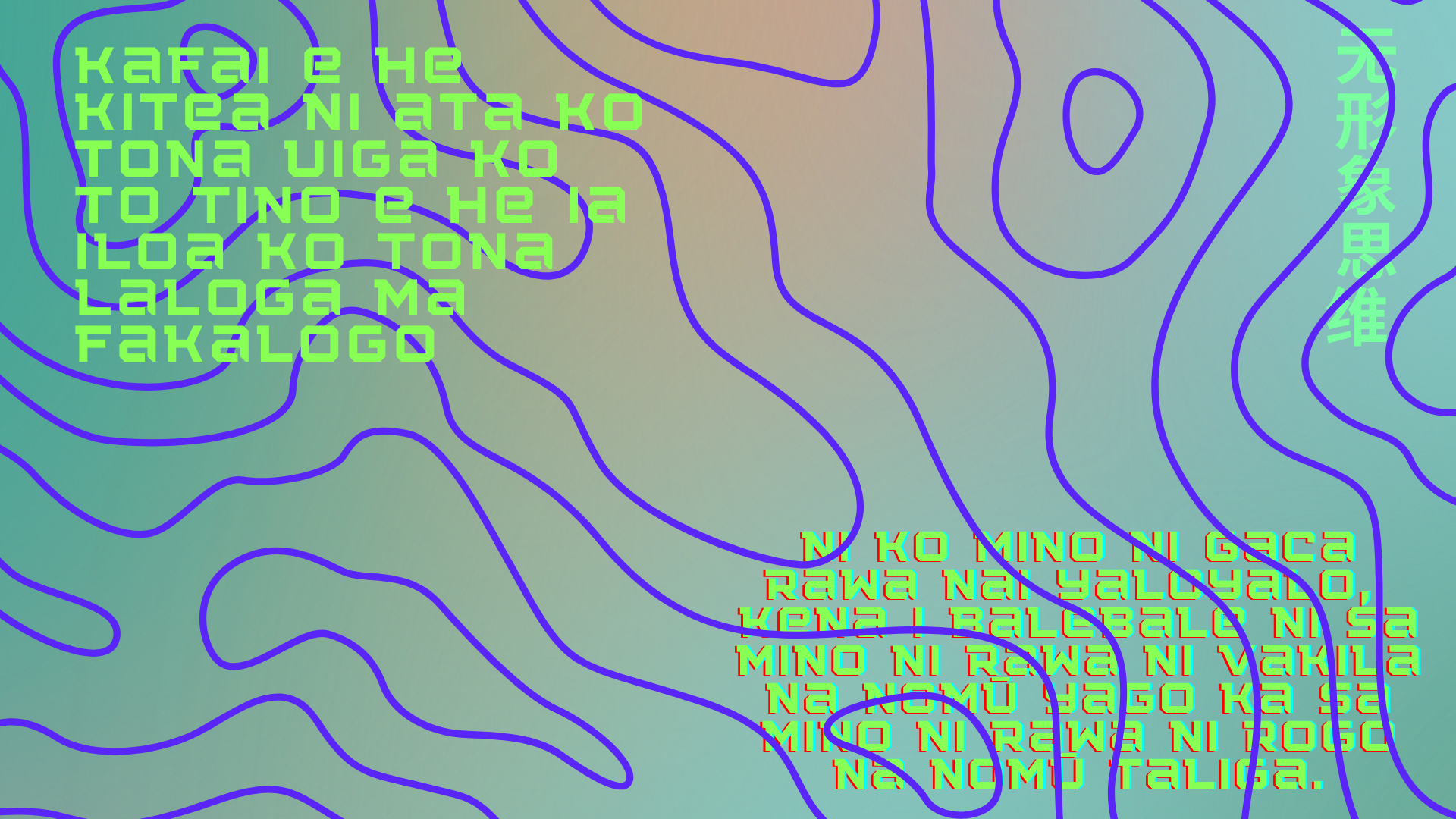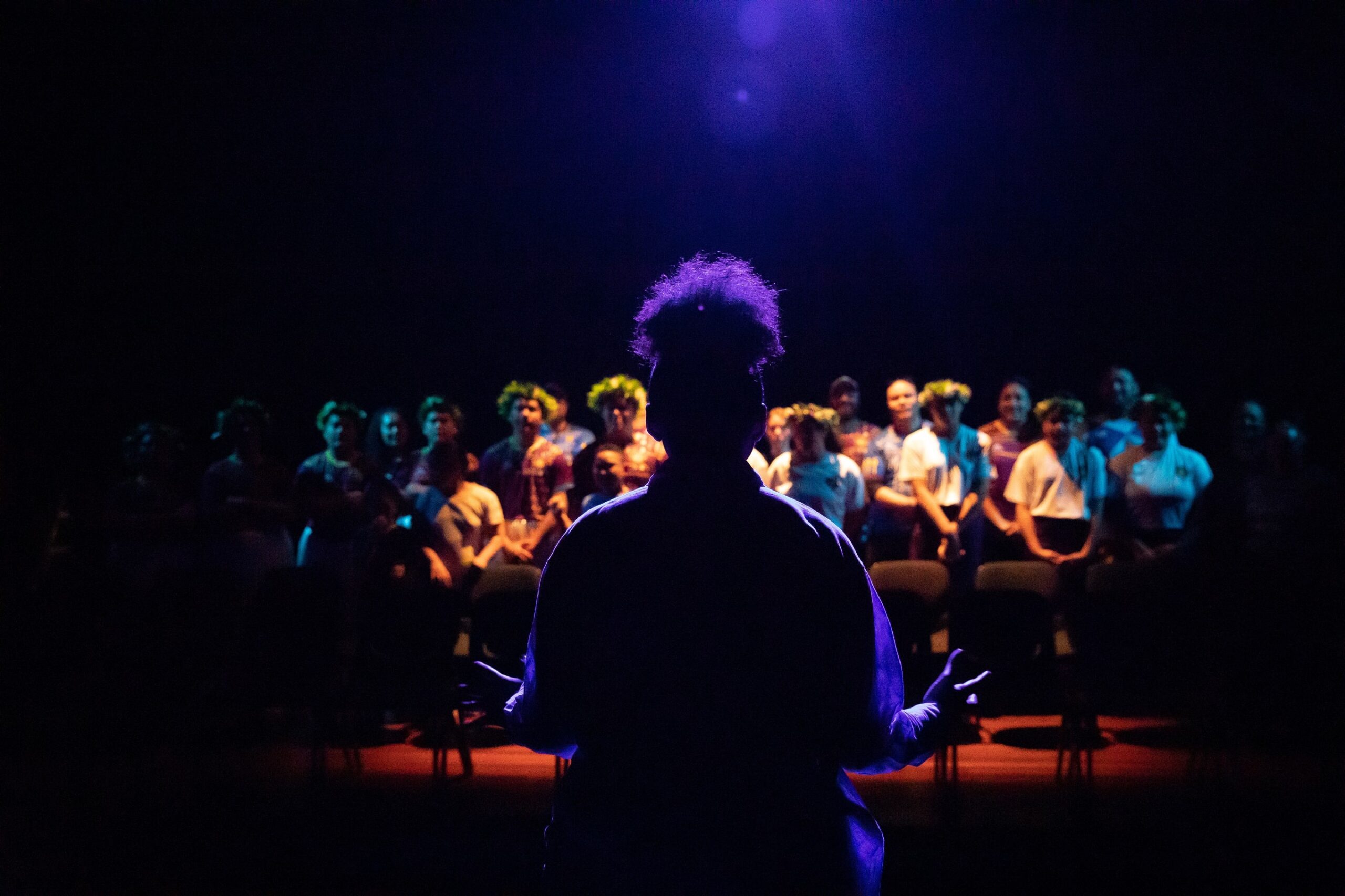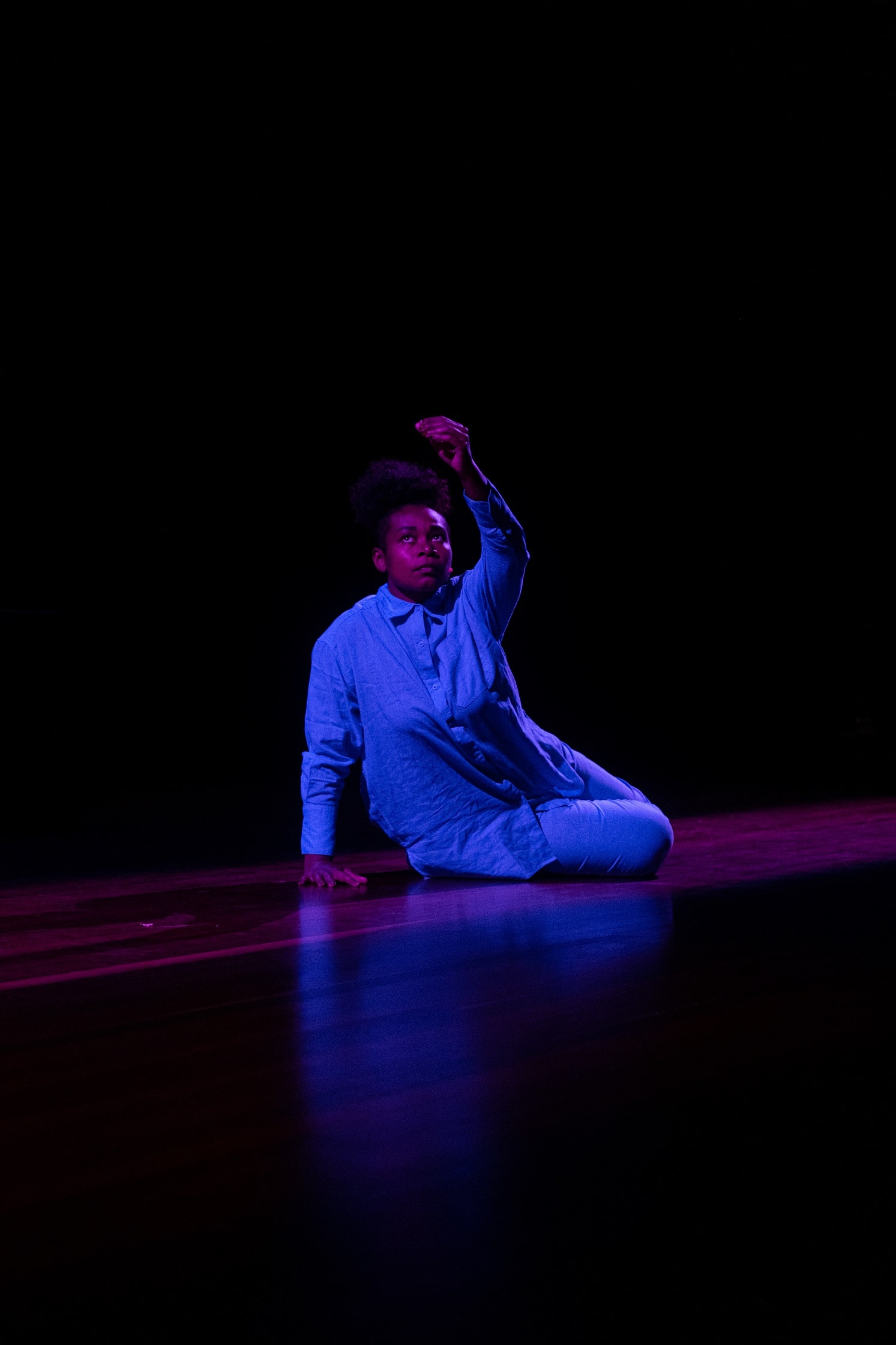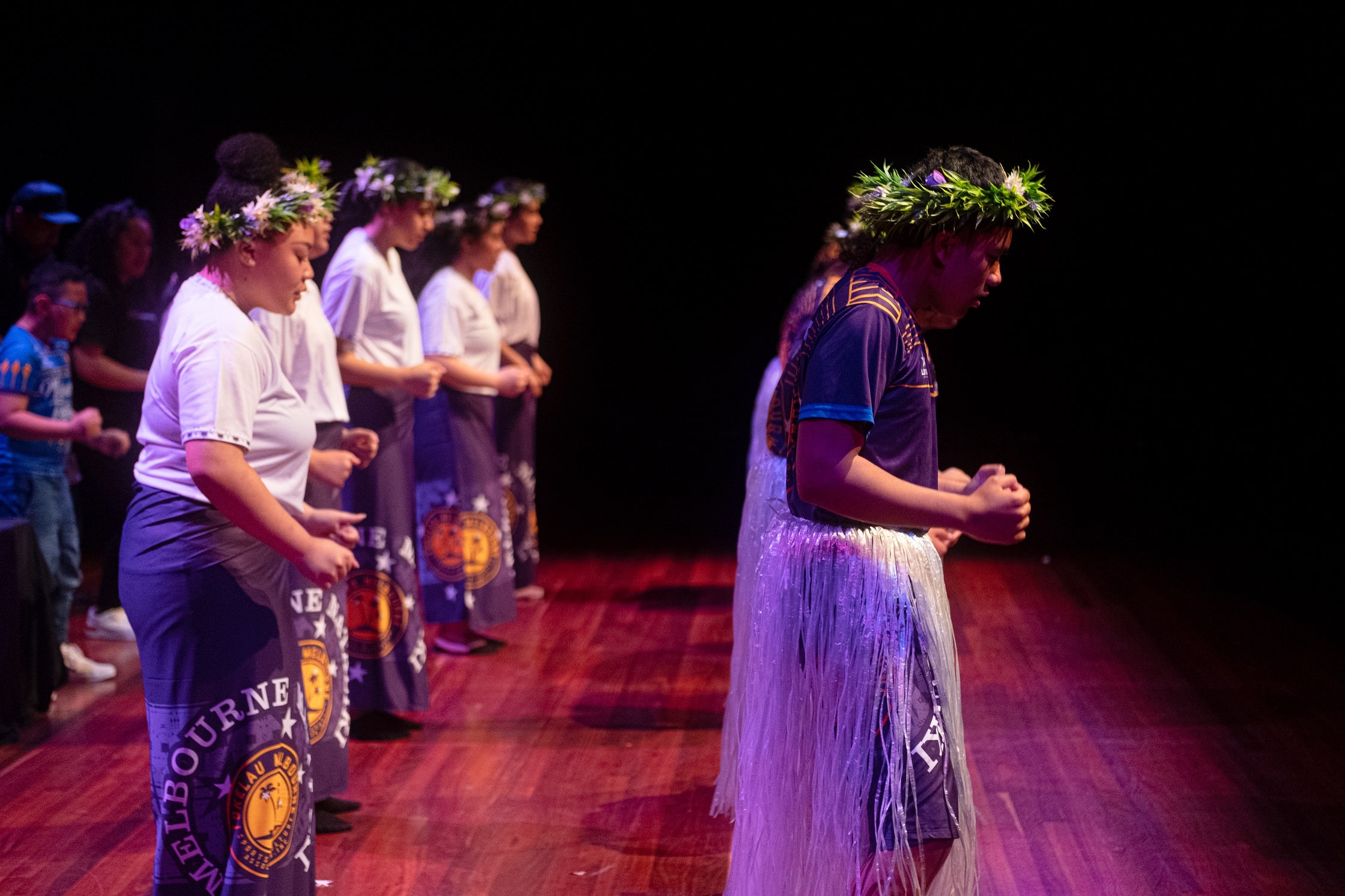
Kafai e he kitea e koe ni ata ko tona uiga ko tō tino e he ia iloa fakalogo ki ona laloga
Studio Kiin
In this work, Studio Kiin probe the way geneaological knowledge transference is deconstructed, redefined, verified and rejected in the digital, and its impact on embodied ontologies in a futurepast where an inheritance cannot be visualised.
Through the scope of the Digital Vā (Koya, 2017) Kafai e he kitea e koe ni ata ko tona uiga ko tō tino e he ia iloa fakalogo ki ona laloga (Gagana Tokelau) or Ni ko mino ni gaca rawa nai yaloyalo, kena i balebale ni sa mino ni rawa ni vakila na nomū yago ka sa mino ni rawa ni rogo na nomū taliga (Vosa vakayale) or 无形象思维 (Simplified Chinese) is a series of live and digital works that negotiate, dissolve and reinforce cartographical perceptions of relationality and borders.
Emele Ugavule and Amy Zhang interrogate the cause and effect of the disembodiment of knowledge in the virtual, and the disruption of procedural memory in a live performance that brings together oratory, movement and original sound composition by Jane Stark. Natasha Ratuva reveals the reformation of memory retention, as a result of the introduction of Web 1.0. Conceptualising the compartmentalising of iTaukei iTovo, Natasha draws from family archives of knowledge captured through text, verbatim recordings and images to build a mirror of her internal digital harddrive on Web 3.0.
Read Artist Statement
I often return to the dilemma that “social” media creates for embodied practices of kinship and story making. When I think about feelings, racing through my veins & synapses connecting, I wrestle between intentional community building and dissolving, and where they both meet consent in the digital. I ask myself over and over and over “How do I measure consent? Am I making informed decisions? Who are my decisions in the digital responsible to?” And these questions return me to the crisis that lingers at the precipice of our fingertips – The unknown unknown. The liminal space. My favourite Oceanic theological scholar & close kin, Brandon Tacadena, speaks to the feeling of seeing something you cannot interpret as diaspora as the “anticipation of your own grief”. Kafai e he kitea e koe ni ata ko tona uiga ko tata ko tō tino e he ia iloa fakalogo ki ona laloga contemplates the domino effect of this pending grief across a century through imagining the reality of diaspora in the digital, and projecting the future of a digital afterlife that automates and immortalizes our stories, forever reminding us of our own memories, so that we do not have to.
Following the journey of a museum tour guide, audiences are invited to pull apart how the digital numbs, redirects, and reconstructs our memories, micro-challenging how we feel, how we think we feel and how we articulate how we feel. It pulls a mirror on how the virtual allows us to mistake the name for the thing, the messenger for the message and calls us to assert our digital sovereignty without losing the wisdom of our bodies.
Read Artist Statement
I often return to the dilemma that “social” media creates for embodied practices of kinship and story making. When I think about feelings, racing through my veins & synapses connecting, I wrestle between intentional community building and dissolving, and where they both meet consent in the digital. I ask myself over and over and over “How do I measure consent? Am I making informed decisions? Who are my decisions in the digital responsible to?” And these questions return me to the crisis that lingers at the precipice of our fingertips – The unknown unknown. The liminal space. My favourite Oceanic theological scholar & close kin, Brandon Tacadena, speaks to the feeling of seeing something you cannot interpret as diaspora as the “anticipation of your own grief”. Kafai e he kitea e koe ni ata ko tona uiga ko tata ko tō tino e he ia iloa fakalogo ki ona laloga contemplates the domino effect of this pending grief across a century through imagining the reality of diaspora in the digital, and projecting the future of a digital afterlife that automates and immortalizes our stories, forever reminding us of our own memories, so that we do not have to.
Following the journey of a museum tour guide, audiences are invited to pull apart how the digital numbs, redirects, and reconstructs our memories, micro-challenging how we feel, how we think we feel and how we articulate how we feel. It pulls a mirror on how the virtual allows us to mistake the name for the thing, the messenger for the message and calls us to assert our digital sovereignty without losing the wisdom of our bodies.






